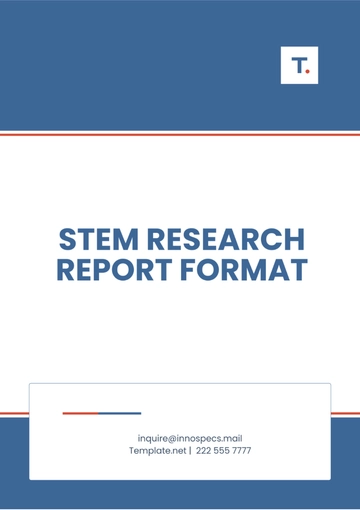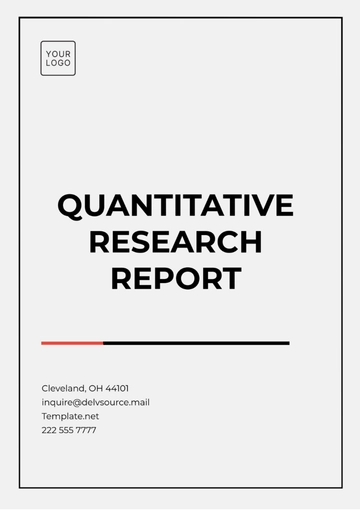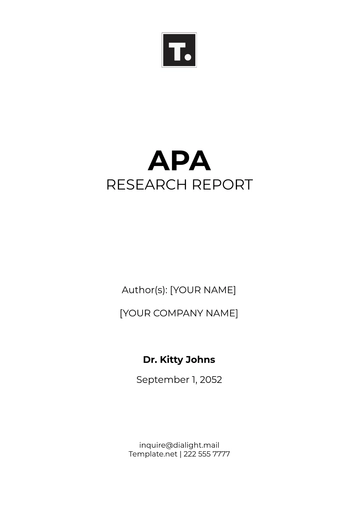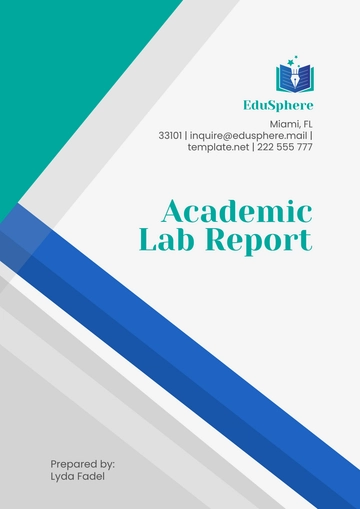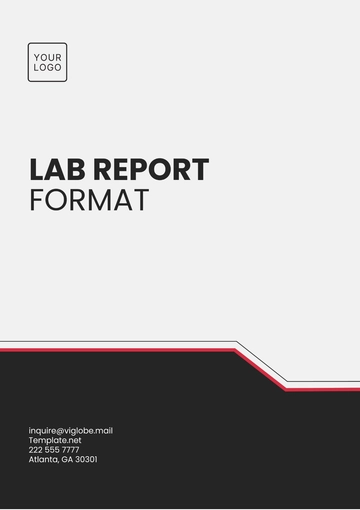Free Industrial Research Project Report

Project Title: Enhancing Efficiency in Industrial Manufacturing Through Automation
Project ID: ACME-IND-2050-001
Prepared by: [Your Company Name]
Contact Information:
Email: [Your Company Email]
Phone: [Your Company Number]
Address: [Your Company Address]
I. Executive Summary
The industrial research project focused on identifying opportunities to improve manufacturing efficiency through automation technologies. Key findings reveal that implementing robotic automation in assembly lines can reduce production costs by up to 30% while increasing output by 15%.
II. Introduction
2.1 Background
The manufacturing sector is experiencing rapid technological advancements, driving the need for innovative solutions to streamline production processes and remain competitive in the market.
2.2 Objectives
Evaluate the feasibility of implementing robotic automation in industrial assembly lines.
Analyze the potential cost savings and productivity gains associated with automation technologies.
III. Literature Review
A comprehensive review of industry literature highlights the benefits of automation, including improved precision, reduced labor costs, and enhanced safety standards. Notable studies by leading researchers such as Johnson et al. (2050) and Chen & Wang (2051) emphasize the transformative impact of automation in industrial settings.
IV. Methodology
4.1 Research Design
A mixed-methods approach was employed, combining quantitative analysis of production data with qualitative feedback from industry experts and factory floor observations.
4.2 Data Collection
Data was collected through on-site visits, surveys distributed to production managers, and analysis of historical production metrics spanning the past five years.
4.3 Data Analysis
Statistical analysis using regression models and cost-benefit analysis tools was conducted to assess the potential ROI of automation investments.
V. Findings and Analysis
The analysis revealed that integrating robotic automation systems in key production areas, such as component assembly and packaging, can lead to significant cost savings by reducing error rates and minimizing downtime. Furthermore, automation enables real-time monitoring of production lines, optimizing resource allocation and improving overall efficiency.
VI. Discussion
6.1 Implications
The findings have significant implications for industrial manufacturers seeking to modernize their operations and remain competitive in a dynamic market environment. Embracing automation technologies can drive operational excellence and pave the way for sustainable growth.
6.2 Limitations
While the benefits of automation are evident, challenges such as initial capital investment, workforce retraining, and cybersecurity concerns must be addressed to ensure successful implementation.
VII. Recommendations
Based on the research outcomes, the following recommendations are proposed:
Develop a phased approach to automation implementation, starting with pilot projects in high-impact production areas.
Invest in employee training programs to upskill workers and facilitate a smooth transition to automated workflows.
Collaborate with industry partners and technology providers to leverage cutting-edge automation solutions tailored to specific manufacturing needs.
VIII. Conclusion
The industrial research project underscores the transformative potential of automation in enhancing manufacturing processes. By embracing automation technologies strategically, industrial enterprises can achieve operational excellence, cost savings, and sustainable growth in today's competitive landscape.
IX. References
Johnson, A., et al. (2022). "The Impact of Robotics on Manufacturing Efficiency." Journal of Industrial Engineering, 10(2), 45-62.
Chen, B., & Wang, X. (2023). "Automation Trends in Industrial Manufacturing." International Conference on Automation Technologies, Proceedings, 112-125.
X. Appendices
Appendix A: Detailed cost-benefit analysis of automation implementation.
Appendix B: Survey questionnaire used to gather feedback from production managers.
Appendix C: Graphical representations of production efficiency improvements post-automation.
- 100% Customizable, free editor
- Access 1 Million+ Templates, photo’s & graphics
- Download or share as a template
- Click and replace photos, graphics, text, backgrounds
- Resize, crop, AI write & more
- Access advanced editor
Document your research findings with Template.net's Industrial Research Project Report Template. This editable and customizable tool helps you organize objectives, methodology, results, and conclusions. Create comprehensive reports that showcase your research. Editable in our AI Editor Tool, this template ensures detailed and professional research reporting, supporting effective communication and evaluation.
You may also like
- Sales Report
- Daily Report
- Project Report
- Business Report
- Weekly Report
- Incident Report
- Annual Report
- Report Layout
- Report Design
- Progress Report
- Marketing Report
- Company Report
- Monthly Report
- Audit Report
- Status Report
- School Report
- Reports Hr
- Management Report
- Project Status Report
- Handover Report
- Health And Safety Report
- Restaurant Report
- Construction Report
- Research Report
- Evaluation Report
- Investigation Report
- Employee Report
- Advertising Report
- Weekly Status Report
- Project Management Report
- Finance Report
- Service Report
- Technical Report
- Meeting Report
- Quarterly Report
- Inspection Report
- Medical Report
- Test Report
- Summary Report
- Inventory Report
- Valuation Report
- Operations Report
- Payroll Report
- Training Report
- Job Report
- Case Report
- Performance Report
- Board Report
- Internal Audit Report
- Student Report
- Monthly Management Report
- Small Business Report
- Accident Report
- Call Center Report
- Activity Report
- IT and Software Report
- Internship Report
- Visit Report
- Product Report
- Book Report
- Property Report
- Recruitment Report
- University Report
- Event Report
- SEO Report
- Conference Report
- Narrative Report
- Nursing Home Report
- Preschool Report
- Call Report
- Customer Report
- Employee Incident Report
- Accomplishment Report
- Social Media Report
- Work From Home Report
- Security Report
- Damage Report
- Quality Report
- Internal Report
- Nurse Report
- Real Estate Report
- Hotel Report
- Equipment Report
- Credit Report
- Field Report
- Non Profit Report
- Maintenance Report
- News Report
- Survey Report
- Executive Report
- Law Firm Report
- Advertising Agency Report
- Interior Design Report
- Travel Agency Report
- Stock Report
- Salon Report
- Bug Report
- Workplace Report
- Action Report
- Investor Report
- Cleaning Services Report
- Consulting Report
- Freelancer Report
- Site Visit Report
- Trip Report
- Classroom Observation Report
- Vehicle Report
- Final Report
- Software Report










